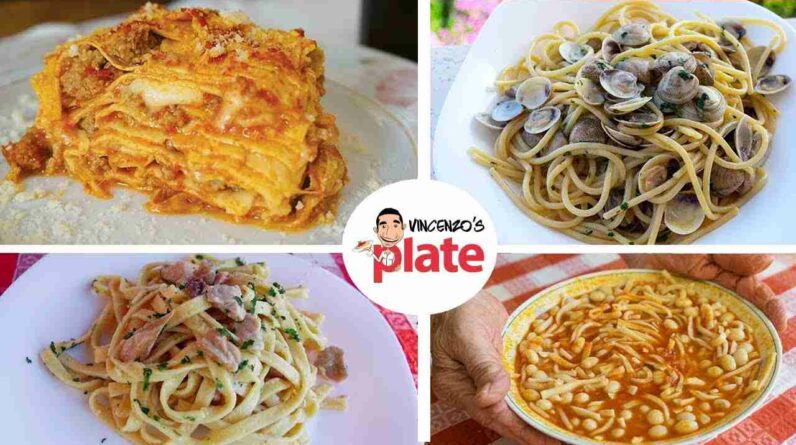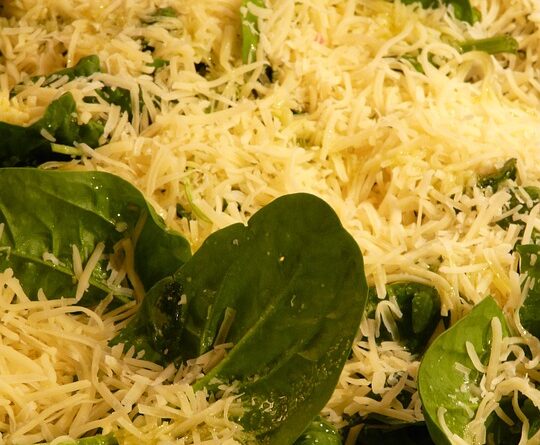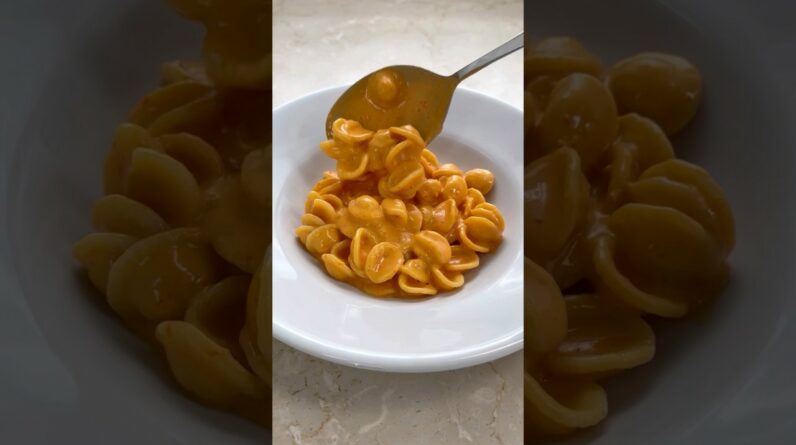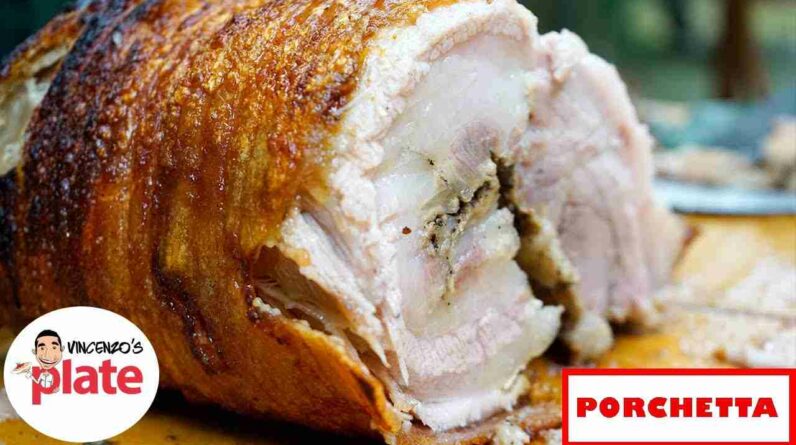Oh, how the sapphire waters of the Mediterranean have whispered secrets to Italian kitchens over the centuries! When we think of the historical significance of seafood in Italian coastal cooking, we’re teleported to ancient times when the Greeks and Romans were ruling the roost—or should I say, the sea? Fishing was more than just a way to fill the belly; it was a dance with nature, an art form perfected by seaside communities and woven into the very fabric of Italian culture.
Now, imagine a bustling ancient marketplace, with vendors proudly displaying their catches of the day. The air is thick with the scent of brine and the sound of haggling for the plumpest sea bream or the most succulent octopus. Fast forward to the present-day fish markets, and the scene is not much different – seafood is, and always has been, a pivotal player on the coastal culinary stage.
“Give me a fish and I eat for a day. Teach me to fish and I eat for a lifetime.” This Italian adage rings truer than ever when you ponder the lasting legacy of seafood in local cooking traditions.
Trace the journey of the humble anchovy as it made its way from being a simple fisherman’s meal to starring in acciughe al verde, a piquant and tantalizing dish that sings with parsley and garlic—a testament to the resourcefulness and creativity that defines Italian cuisine.
Or let’s consider the grand feasts of Renaissance nobles, where it wasn’t unusual to find tables groaning under the weight of exquisite seafood preparations, a clear indicator of wealth and power. These decadent repasts showcased not only the variety of the sea’s bounty but also an evolving palate and finesse that has seeped into every layer of coastal cooking.
What’s also fascinating is the ingenuity of Italian coastal communities in preserving their precious seafood. Salt-curing, drying, and smoking fish evolved not just as means for survival, but as a food craft that has gifted us with delicacies like bottarga and stoccafisso, still celebrated in today’s cuisine.
And how about the religious influence? With Catholicism advocating meat-free days, seafood became even more embedded in the Italian diet. Feast days, like Christmas Eve’s La Vigilia, introduces a spread of multiple seafood courses, embodying the intertwining of faith, tradition, and the sea.
There’s a timeless romance about Italian coastal cooking that attracts food lovers from around the world. It’s not just about the fresh catch; it’s the symphony of history, culture, and innovation, all coming together on a plate. Make no mistake, the stories these dishes could tell are as rich and varied as the sea is deep.
Stay tuned, my fellow food enthusiasts, as we embark on a palatable voyage through some of the most iconic and mouthwatering seafood dishes from Sicily and Naples! Buon appetito!
Typical Seafood Dishes in Sicilian Cuisine
Buckle up, amici, because we’re heading to the sun-drenched island of Sicily, where the seafood dishes are so vibrant and full of flavor, they could make a grown man weep with joy. Sicilian cuisine is the epitome of a culinary mosaic, with influences from the Greeks, Arabs, and Normans all playing their part. It’s not just food; it’s an edible history lesson!
Let’s kick things off with the quintessential Sicilian dish: Spaghetti ai Ricci di Mare. This pasta dish is a love letter to the sea, with sea urchins imparting a rich, briny flavor that’s unlike anything else. Foodies looking for an authentic taste of Sicilian marine life – this is your Holy Grail.
Next up is a dish that sings of the Mediterranean – Caponata di Pesce Spada, a sumptuous combination of swordfish with the sweet and sour splendor of caponata. Vinegar, sugar, eggplant, and a bounty of capers collaborate to make a tang that zings on the tongue. The swordfish, beloved by locals, stands its ground with meaty resilience against the bold flavors.
No seafood conversation is complete without the mention of Sarde a Beccafico. This classic Sicilian dish harkens back to days of yore where common folks aimed to mimic the meals of the aristocracy who feasted on beccafico, a bird known for its luxurious taste. Sardines are stuffed with breadcrumbs, pine nuts, and raisins, then rolled up tight and baked. It’s a dish that turns simplicity into opulence, don’t you think?
And oh, how could we forget the star of Sicilian street food, the iconic Squid Ink Arancini? These crispy, jet-black rice balls are a marvel both to the eyes and the palate. Stuffed with squid or cuttlefish and their ink, alongside gooey cheese, these balls are deep-fried to golden perfection – a true badge of street food honor.
For those with an adventurous spirit, Polpo Bollito, boiled octopus, is a testament to the versatility of seafood. Often served alongside potatoes or in a salad, it brings a subtle taste of the sea that perfectly complements the kick of olive oil and lemon it’s lovingly dressed with.
Last but not least, we have the sweet allure of Granita con Brioche. Granted, while not seafood, after savoring the salt of the sea, a refreshing granita (slush) paired with fluffy brioche is the traditional Sicilian way to cleanse the palate. Try the lemon or almond flavors for a true taste of Sicilian dolce vita!
In Sicily, the seafood isn’t just fresh; it’s a treasure chest of flavors waiting to be unlocked. Now, you won’t find thick coatings or heavy sauces here—oh no! The Sicilian mantra is to let the seafood sing its siren song, simply enhanced by the likes of garlic, olive oil, tomatoes, and the freshest of herbs.
Ocean breezes, the sound of waves crashing against the shore, and the promise of a seafood feast to remember – that’s the Sicilian way. Preparing seafood here isn’t just cooking; it’s an act of love, a culture, and a lifestyle that celebrates the generous gifts of the Mediterranean Sea. So tuck in, friends, and let the taste of Sicily transport you!
Fresh Seafood in Neapolitan Culinary Traditions

Alright, let’s set sail from the enchanting island of Sicily to the captivating coast of Naples. Here we’re diving into the heart of Neapolitan cuisine, where the mighty Vesuvius meets the waters, and seafood is not just food, but poetry on a plate. Ah, la dolce vita indeed!
When you stroll through the vibrant streets of Naples, you can’t help but notice the love affair between the city and its seafood. It’s evident in the animated cries of fishmongers and the ubiquitous friggitorie serving up fragrant, deep-fried seafood to hungry passersby. This is where Frittura di Mare becomes more than a dish – it’s an institution. Picture a paper cone filled with lightly battered and fried shrimp, calamari, and even tiny fish, eaten with a quick squeeze of lemon. It’s fast food, Neapolitan style!
But wait, there’s more! Naples lays claim to one of Italy’s culinary crowns: Pizza. And what happens when you combine pizza with seafood? You get the glorious Pizza ai Frutti di Mare. Imagine a thin, blistered crust straight from the wood-fired oven, adorned with a medley of seafood, tomatoes, garlic, and parsley. It’s not only a feast for the eyes but for the soul as well.
Let’s talk pasta. If you’re looking for comfort in a bowl, you cannot miss out on Spaghetti alle Vongole. It’s a love story between clams and pasta, with the clams cooked in white wine, garlic, and a dash of chili. It’s simple, it’s elegant, and by all that’s holy, it’s deliciously addictive. When those clams open up and release their sea-kissed broth, melding with the perfectly al dente spaghetti, angels sing, my friends!
And then there’s Zuppa di Pesce, a robust seafood soup that’s like the Mediterranean in a bowl. Chock-full of whatever the fisherman’s catch has offered up that day, it’s simmered slowly to let all those flavors have a little party in the pot. A loaf of crusty bread to sop up the juices is mandatory here. This isn’t just dinner; it’s a whole experience.
Another Neapolitan masterpiece to sink your teeth into is the iconic Impepata di Cozze – mussels peppered in a piquant broth. True to its name, this dish shines with a generous helping of freshly ground pepper, which complements the brininess of the mussels like a dream. It’s a harmonious match that waltzes right onto your taste buds.
And if you’ve got a soft spot for risotto, then the Risotto alla Pescatora is there to embrace you with open arms. It’s a risotto that’s brimming with the treasures of the sea – think shrimp, mussels, clams, and squid – each contributing to a rich seafood stock that transforms rice into a creamy scoop of heaven.
When you’re in Naples, you realize that seafood isn’t just sustenance; it’s a way of life that encapsulates joy, community, and the spirit of a city that has revolved around the sea since its dawn. A trip here without indulging in its seafood traditions would be like a gondola without a serenade – utterly unthinkable!
So when in Naples, do as the Neapolitans do. Embrace the vibrancy of their seafood cuisine, let go of any inhibitions, and allow yourself to be swept away by the bold, authentic flavors of the coast. Each bite is a story, each dish a legacy of the deep, blue Meditteranean caressing the soul of this historic city.
Seafood Selection and Seasonality on the Italian Coast
Now, let’s pull up our fishing nets and have an intimate chat about the art of wise seafood selection and the importance of seasonality along the picturesque Italian coast. It’s not just about catching fish; it’s about catching fish at the right time of the year to ensure the freshest, most flavorful harvest.
Ever heard of a little thing called the “mussel’s holiday”? That’s right, darlings, even mussels need a break! Traditional wisdom suggests there are months when it’s better to avoid mussels – that is, those without an ‘r’ in their names. So, from May through August, mussels are verboten in many localities, giving them a chance to spawn and regenerate. Remember, sustainability is as Italian as a perfectly aged Parmigiano-Reggiano!
When the warm winds of summer kiss the coast, it’s time for the lighter fare to shine. This is when fish like the anchovies and sardines are at their juicy best, perfect for those salads and lighter pasta dishes that have earned their stars during the sun-soaked days. Come fall, as the air begins to cool, the heavier, meatier fish like swordfish take the stage, ready to be grilled or baked with a heartier accompaniment.
- Autumn brings the squid – calamari, to be exact – and their inky cousins, the cuttlefish. Their firm texture and subtle sweetness are a canvas for traditional Italian flavors, perfect for stuffing or enlivening a risotto.
- Winter is the celebration of shellfish, with cozy feasts often featuring plump clams and mussels steaming in fragrant broths to ward off the chill.
- As spring emerges, so does the lean and opalescent sea bass, begging to be draped in a light tomato sauce or perhaps served with a spritz of lemon and a drizzle of extra virgin olive oil.
All year round, local fishermen head out with the rising sun, their weathered hands pulling in the bounty of the sea. They are the unsung maestros of seasonality. Talk to any of them and they’ll tell you—a fish should be eaten when it’s in its prime. Trust them; they’ve been plying these waters for generations, and their intimate knowledge of the sea’s rhythms is unparalleled.
Let’s not overlook how Italians buy their fish—the eyes! If they’re bright and clear, you’ve got a winner. And the gills? The redder the better, my friend. Firmness, shine, and a clean scent like a sea breeze—these are the marks of truly fresh seafood. Anything less would be an insult to any self-respecting Italian kitchen.
But this isn’t just about individual selection; it’s about the cultural tapestry that weaves through each fishing community. The fish market isn’t just a place to buy food; it’s a sizzling social hub where gossip flies as fast as the fish scales. It’s where recipes are shared, where the catch of the day dictates the menu, and where the bond between land, sea, and people is as palpable as the salty air.
Every net cast into the water, every mussel pried from the rocks, tells a story of an Italy intimately connected to its coastal heritage. So when you bite into that linguine alle vongole or that perfectly chargrilled branzino, you’re tasting centuries of tradition, a symphony of seasonal cycles, and the very heart of coastal Italy’s relationship with the sea. And isn’t that something to savor? Now, on to the next chapter of our delicious journey – the cultural and social impact of seafood in these proud coastal Italian communities.
The Cultural and Social Impact of Seafood in Coastal Italian Communities

Seafood doesn’t merely tantalize the taste buds in coastal Italian towns; it weaves through the culture like threads in a rich tapestry, connecting people with age-old traditions and community rituals. In Italy, food isn’t just food—it’s a narrative of life, showcasing the vibrant interplay between humans and the aquatic world at their doorstep.
Consider the rousing atmosphere of the local sagra, vibrant festivals celebrating a particular food, often seafood, that tell the tale of regional pride and communal spirit. From the boisterous Sagra del Pesce in Camogli, where an enormous frying pan sizzles with fresh catch, to the Festa di San Pietro in coastal cities like Naples, where fishermen honor their patron saint, seafood isn’t just nourishment; it’s the centerpiece of celebration.
But it’s not all pomp and party; there’s a humbler side to this sea-driven society. Look closely, and you’ll find the fishermen, rising before the sun, meticulously caring for their boats and nets. Their daily rituals are a dance as ancient as time, tied to the rhythm of the tides—a silent pact between man and sea. And when they return with their vessels brimming, the whole community shares in the fruits of their labor, a reminder that the sea provides for those who respect its might.
Any Italian will tell you that mealtime is where bonds are strengthened. Families gather around tables crowded with plates of frutti di mare, and stories flow as freely as the wine. It’s this collective moment, often with seafood as the focal point, that cements social ties and encourages the sharing of tradition from one generation to the next.
Seafood in these regions also denotes identity and belonging. Each coastal enclave boasts its unique flair, from the mussels of Taranto to the anchovies of Cetara. It’s not uncommon to overhear debates about the best way to prepare scampi or which village makes the ultimate baccalà. These dialogues are more than mere culinary critiques; they’re declarations of cultural heritage.
In the labyrinthine alleys of seaside towns, the culinary rituals surrounding seafood blend seamlessly with everyday life. Fish is meticulously selected for the cherished family recipe, each ingredient a carefully chosen verse in the song of their coastline. It reflects a respect for the environment and a philosophy of sustainability that’s been part of coastal Italian life since time immemorial.
And let’s not forget the grandeur of the Italian feast, particularly when seafood is the guest of honor. Tables span the length of entire streets during the festa, neighbors become kin, and strangers are merely friends who haven’t yet shared a meal. These are not merely dinners; they are events that foster unity, where the love for seafood is as deep as the Mediterranean itself.
In every coastal village, from the rugged cliffs of the Amalfi Coast to the windy isles of Sicily, seafood inspires art, poetry, and music. The sea’s bounty fuels the creative spirit, its presence echoed in vibrant murals, evocative songs, and the tales of fishermen that sound more like myth than memory.
This, my dear food lovers, is the essence of seafood in Italian coastal communities—a storybook where every chapter savors the saline kiss of the sea. Whether it’s in the lingering taste of a well-seasoned cioppino, the conviviality of a seafront osteria, or the quiet respect for the ocean’s bounty, the cultural and social impact of seafood courses through the veins of coastal Italy, as integral to its way of life as the tide itself.










